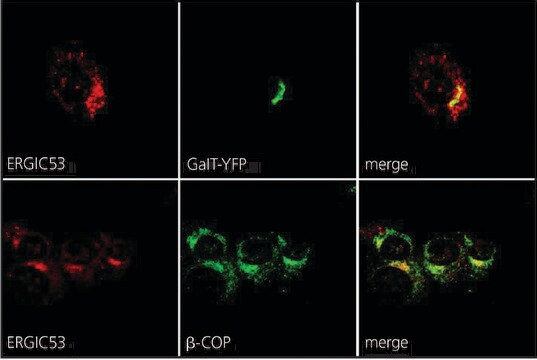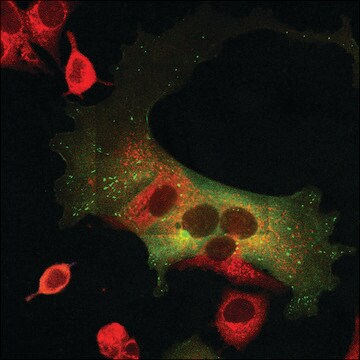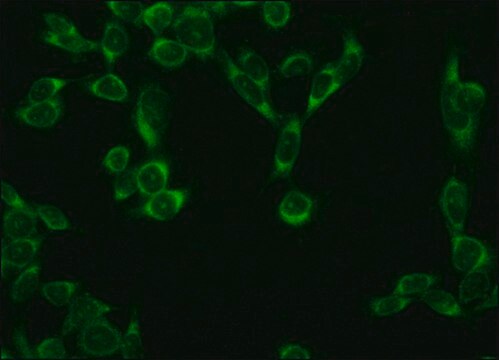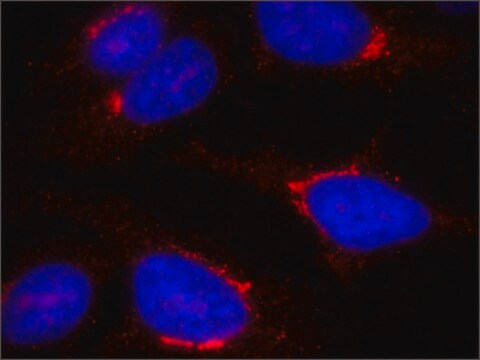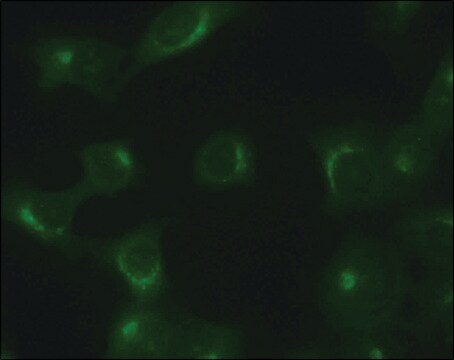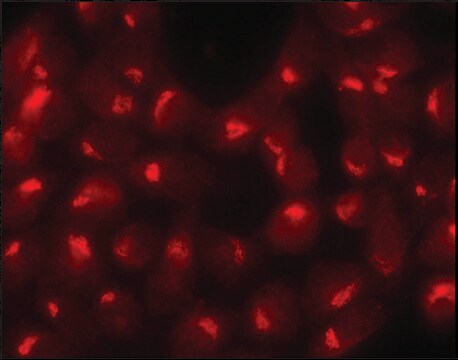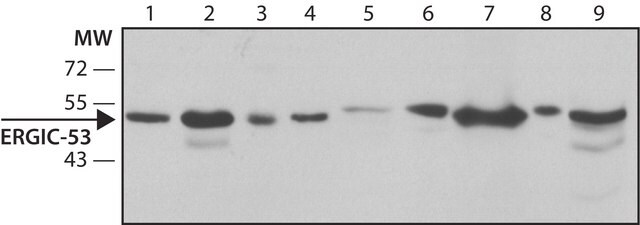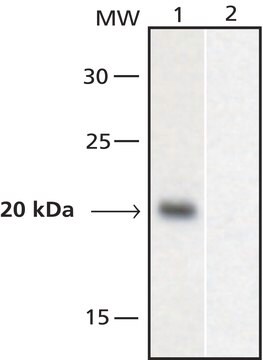G6160
Monoclonal Anti-β-COP antibody produced in mouse
clone maD, ascites fluid
Synonym(s):
Anti-BARMACS, Anti-COPB
About This Item
Recommended Products
biological source
mouse
Quality Level
conjugate
unconjugated
antibody form
ascites fluid
antibody product type
primary antibodies
clone
maD, monoclonal
contains
15 mM sodium azide
species reactivity
human, rat, hamster, monkey
technique(s)
indirect immunofluorescence: 1:80 using cultured Chinese hamster ovary (CHO) cells
microarray: suitable
western blot: 1:1,000 using a preparation of stacked Golgi membranes from rat liver
isotype
IgG1
UniProt accession no.
shipped in
dry ice
storage temp.
−20°C
target post-translational modification
unmodified
Gene Information
human ... COPB1(1315)
rat ... Copb1(114023)
Related Categories
General description
Specificity
Immunogen
Application
Immunofluorescence (1 paper)
- analysis at a working dilution of 1:1000 using subcellular proteins from rat PC12 (pheochromocytoma) cells
- analysis of gradient fractions of cerebral microvessels to confirm the separation of plasma membrane lipid raft domains from intracellular membranous components
- detection of the Golgi marker protein β-COP in exosome-enriched extracellular microvesicles (eMV) preparations from untreated HeLa cells
It is suitable for immunostaining of β-coatomer, that is used as a intracellular, Golgi protein marker :
- to confirm that CD14 staining is localized to the cell surface of HAEC
- for examining the localization of Meltrin β in the Golgi apparatus and its vicinity in neurons prepared from developing dorsal root ganglia of mouse embryos
- in NB4 and NB4-LR1 cells to examine the colocalization of PKA regulatory subunits
- in CHO cells to examine colocalization of GFP-Rab24
It is suitable for use in cell-surface ELISA of human aortic endothelial cells (HAEC)
It is also suitable for western blot analysis at a working dilution of 1:1000 using a preparation of stacked Golgi membranes from rat liver, for indirect immunofluorescence at a working dilution of 1:80 using cultured Chinese hamster ovary (CHO) cells and for microarray.
Biochem/physiol Actions
Disclaimer
Not finding the right product?
Try our Product Selector Tool.
related product
Storage Class Code
10 - Combustible liquids
WGK
nwg
Flash Point(F)
Not applicable
Flash Point(C)
Not applicable
Choose from one of the most recent versions:
Already Own This Product?
Find documentation for the products that you have recently purchased in the Document Library.
Our team of scientists has experience in all areas of research including Life Science, Material Science, Chemical Synthesis, Chromatography, Analytical and many others.
Contact Technical Service